| Designation: | ASV 150 (XM1117) |
 |
|---|---|---|
| Manufacturer: | Textron Marine & Land Systems | |
| Product type: | Armoured Vehicles | |
| Name: | Wheeled armoured personnel carrier |
The Armored Security Vehicle (ASV) is a highly mobile, survivable and C-130 transportable 4X4 wheeled vehicle currently in production for the U.S. Army's Military Police. The ASV's modular expandable armor provides front, rear and side crew protection from .50-caliber armor-piercing ammunition. Additionally, the ASV offers defense from 155mm artillery shell fragments overhead and 12-pound mine blasts under each wheel.
Following an international competition for an Armored Security Vehicle (ASV) in which the two finalists were the Textron Marine & Land Systems, Cadillac Gage ASV 150 (4 × 4) and the AV Technology, Limited Liability Company, with a modified version of its Dragoon (4 × 4) light armoured vehicle, the ASV 150 was selected by the US Army in December 1995.
Under Phase One, the US Army Tank Automotive Command awarded the company a contract worth USD3.2 million to build four prototypes of the ASV 150 (4 × 4) vehicle, which were completed early in 1997.
In early 1999 Textron Marine & Land Systems was awarded a contract by the US Army Tank-automotive & Armaments Command valued at USD50 million for the supply of 94 ASV 150 (4 × 4) vehicles to the US Army over a five year period.
First vehicles were delivered in the second quarter of the year 2000 and the contract also included additional production options, which, if exercised, would have increased the total buy to 250 vehicles.
The US Army ASV 150 vehicles that are used by the military police with standard equipment including protection against 14.5 mm small arms fire, independent suspension and the installation of a one-man turret armed with a .50 (12.7 mm) M2 HB machine gun and a 40 mm MK 19 automatic grenade launcher. A bank of four electrically operated smoke grenade launchers is mounted either side of the turret, firing forwards.
This turret is the latest version of that originally designed for installation on US Marine Corps now BAE Systems, Ground Systems AAV7A1 amphibious assault vehicles. This turret is called the Up Gunned Weapon Station (UGWS) and is also referred to as the 40/50 turret.
Turret improvements over the standard UGWS are also claimed to provide significant benefits to the gunner and include superior survivability, reduced silhouette and greater compliance with human factors design. The weapons are aimed and fired using a roof-mounted M36E2 day/night sight.
The ASV 150 builds on the latest production LAV-150ST (4 × 4) LAV with the S in the designation meaning stretched and the T turbocharged. The major change is the replacement of the old solid axles, semi-elliptical leaf springs and double-acting hydraulic shock-absorbers by a new fully independent coil spring suspension, which gives an improved ride on road and cross-country.
The first production vehicles were completed on schedule in April 2000, with the first six M1117 ASVs being sent to the US Army's 18th MP Brigade in Germany for training in two phases, first vehicle familiarisation and operation and second tactical employment and firing.
Three vehicles were issued to the 615th MP Company with the other three to the 527th MP Company. Eventually each MP Company will have 12 ASVs.
Of the 13 vehicles delivered by early 2001, six were deployed to Kosovo with another six in Germany, with one vehicle still undergoing trials at the Cold Regions Test Center at Fort Greenley, Alaska.
The M1117 ASV is replacing the current up-armoured HMMWV (High Mobility Multipurpose Wheeled Vehicle) and provides a significant increase in armour protection, firepower and mobility for the Military Police mission.
This includes law enforcement, area security, battlefield circulation and enemy prisoner of war operations over the entire continuum of war and operations other than war.
Textron Marine & Land Systems has also studied a stretched vehicle with a longer wheelbase and wider doors to be used as a medical evacuation vehicle or a command and control vehicle.
In July 2004 the US Project and Contracting Organization (PCO), acting on behalf of the Iraqi Minister of the Interior, awarded Textron Marine & Land Systems a contract worth USD50 million for the supply of 43 ASVs for the recently formed Iraqi Civil Intervention Force.
Work on this contract started in July and the first vehicles were delivered in November 2004, with all vehicles delivered by July 2005. Subsequently additional orders were placed which brought the total Iraqi order up to a total of 43 units, all of which have been delivered.
Of the 43 units, 41 were in a new stretched armoured personnel carrier configuration, which will be outfitted to carry 10 people and armed with a roof-mounted 7.62 mm or 12.7 mm machine gun.
The remaining two vehicles were supplied in a command and control configuration and fitted with extensive communications equipment, as well as a land navigation unit.
Standard equipment on the Iraq ASV vehicles included independent suspension, powered steering, an NBC overpressure system and a central tyre-pressure regulation system that allows the driver to adjust the tyre pressure to suit the terrain being crossed.
The M1117 ASV has been in quantity production at the Textron Marine & Land Systems facility in New Orleans for several years and by July 2004 the US Army had placed orders for a total of 132 units, of which over 80 had been delivered to date.
The US Army subsequently increased its order to 182 units and by late 2005 this had increased to over 1,000 vehicles for the US Army.
Production was stopped late in 2005 owing to hurricane Katrina, which caused severe damage to the ASV production facility. Production commenced again early in 2006 and by the end of the first quarter of 2006 production was running at 48 units a month. In mid-2007 an additional order was placed that brought the total M1117 order book to 1,729 units. By late 2007 over 1,000 M1117 vehicles had been built and production was being maintained at 48 a month. Description
The overall layout of the ASV 150 is similar to that of the earlier LAV-150ST described in detail in a separate entry, with the commander and driver at the front, crew compartment and turret in the centre and power pack at the left rear.
The commander is seated on the right with the driver to the left and bulletproof windows are provided to their front and sides; above each of their positions is a single-piece hatch cover.
In either side of the hull is a two-part door with the lower part folding downwards to form a step and the upper part opening to the rear. The latter has a bulletproof vision block with a circular firing port below. In addition, there is a door in the right side at the rear with the lower part folding downwards to form a step and the upper part opening upwards.
The hull of the ASV 150 is of all-welded steel armour similar to the LAV-150ST but has been fitted with advanced ceramic armour to provide the occupants with a higher level of protection against heavy machine gun armour-piercing rounds, conventional artillery splinters, land mines and the effects of rocket-propelled grenades.
According to Textron Marine & Land Systems, the armour package fitted to the ASV 150 provides protection against .50 (12.7 mm) M2 HB armour piercing ammunition at a range of 250 m through a full 360°, 155 mm artillery projectile fragments overhead at 15 m, 5.44 kg of TNT under any wheel station and 1.81 kg of TNT at any location under the vehicle.
The advanced armour system consists of an IBD Modular EXpandable Armour System (MEXAS) that utilises a ceramic composite appliqué-mounted on the exterior of the welded steel hull of the ASV 150, with a spall liner on the interior surfaces.
Although the US Army ASV 150s are fitted with the one-man UGWS, the vehicle can be fitted with a wide range of other weapon systems to meet different operational requirements.
The turret is in the centre of the vehicle, with the engine compartment left side at the rear. Firing ports and vision devices allow some of the crew to fire their weapons from within the vehicle.
The 40 mm grenade launcher has a cyclic rate of fire of 325 to 375 rounds per minute while the 12.7 mm machine gun has a cyclic rate of fire of 450 to 600 rounds per minute. There is also provision for mounting a 7.62 mm M60 or 5.56 mm M249 machine gun externally.
The gunner is provided with an M36E2 day/night sight with ballistic graticule and seven unity periscopes provide vision through a full 360°.
Turret traverse is powered and manual through a full 360° while weapon elevation is from -8° to +45° under manual control.
The ASV 150 has a new independent axle coil spring suspension system, which gives a significant increase in cross-country mobility as well as providing a better ride for the crew. This gives a jounce front/rear of 17.7/15.2 cm and rebound front/rear of 15.2/12.7 cm.
Standard equipment includes a central tyre-pressure regulation system that allows the driver to adjust the tyre pressure to suit the type of ground being crossed, NBC system and measures to reduce noise and minimise the thermal signature of the vehicle. The central tyre pressure system can be adjusted for sand/snow, off-road and highway conditions.
Other equipment on US Army vehicles includes a fire detection and suppression system, passive AN/VVS 501 driver's night viewer and a front-mounted Braden winch with a capacity of 9,072 kg on a bare drum.
To reduce both procurement and operating costs, wherever possible proven and in-production subsystems have been used in the design of the ASV 150.
The ASV 150 can be transported in cargo aircraft, aboard ships or landing craft, or by road or rail and be ready to roll off in a mission-ready condition. With the appliqué armour kit it is fully transportable in a C-130 Hercules transport aircraft. The C-130 can carry one ASV 150, the C-141 two, the C-17 four and the C-5 eight.
The standard M1117 ASV has a manually operated fire-suppression system, but an automatic fire detection and suppression system could also be fitted.
Other optional equipment for the vehicle includes an air conditioning system, heater, auxiliary heater, various types of passive night vision equipment, global positioning system and various communications systems. The latter can include the AN/VRC-91A radio set and an AN/VIC-3 four-station intercom. Variants
This vehicle retains the standard M1117 Guardian one person turret but is fitted with telescopic mast containing a number of battlefield sensors.
This has been developed to meet the requirements of the US Army Field Artillery to replace the M707 HMMWV (4 x 4) currently used for this role.
Following trials with prototype vehicles the US Army has funded the procurement of 365 M1200 with the first 31 being fielded in late 2007.
Prime contractor is DRS Technologies with Textron Marine & Land Systems supplying the vehicle to DRS Technologies who integrate the sensor package and deliver this to the user.
The DRS sensor package includes a laser designator and rangefinder, thermal imager, digital command and control system, a blended inertial/global positioning system, navigation and targeting capability
The system provides far target location and laser target designation for both artillery and air delivered general purpose and precision guided munitions.
For trials purposes a M1117 has been fitted with the Recon/Optical Incorporated Common Remotely Operated Weapon Station (CROWS). This is already used by the US Army on its AM General armoured High Mobility Multi-purpose Wheeled Vehicles (HMMWVs) deployed to Iraq.
Textron Marine & Land Systems has also proposed that a number of more specialised versions of the M1117 could be developed, such as NBC reconnaissance.
|
||||||||||||||||||||||||||||||||||||||||||
|
||||||||||||
|
||||||||||||||||||
|
|||||||||||||||||||||||||
All contracts...
 |
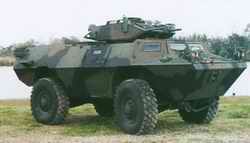 |
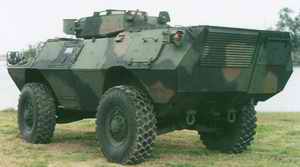 |
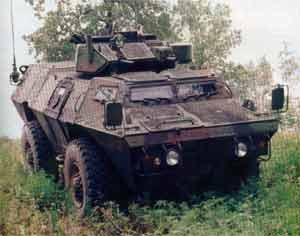 |
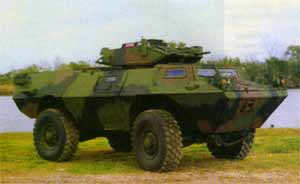 |
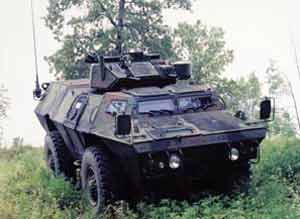 |
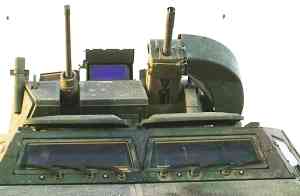 |
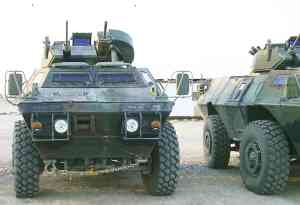 |
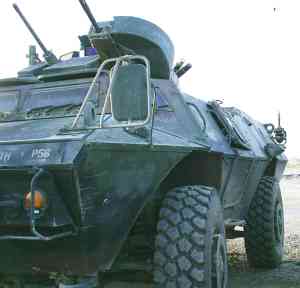 |
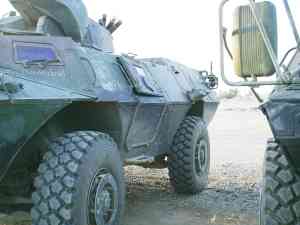 |
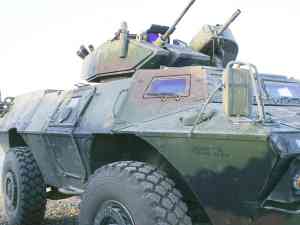 |
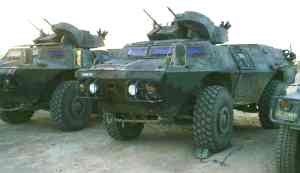 |
 |
 |
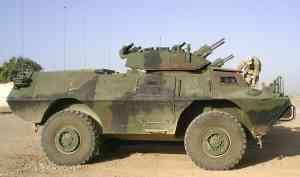 |
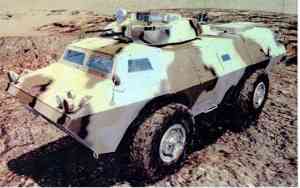 |
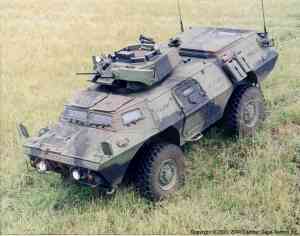 |
 |
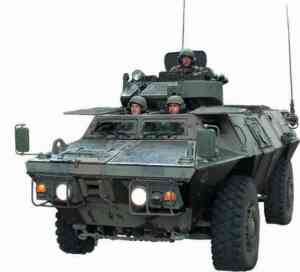 |
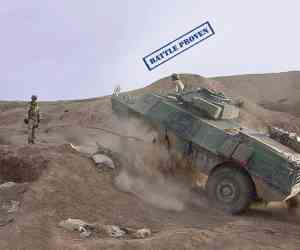 |
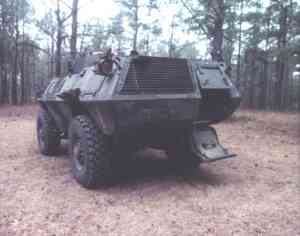 |
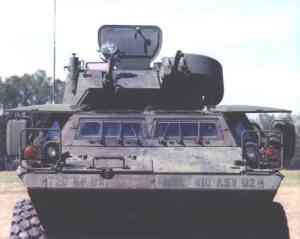 |
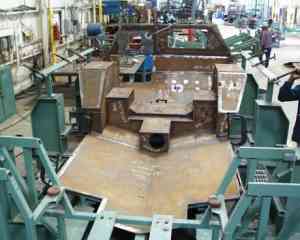 |
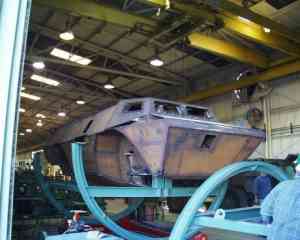 |
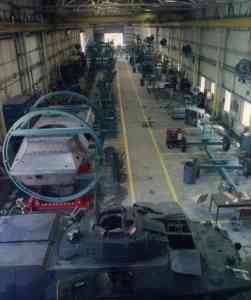 |
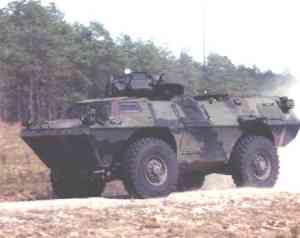 |
 |
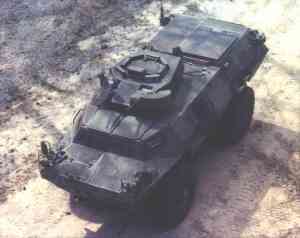 |
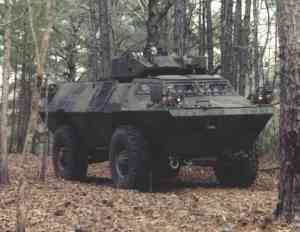 |



